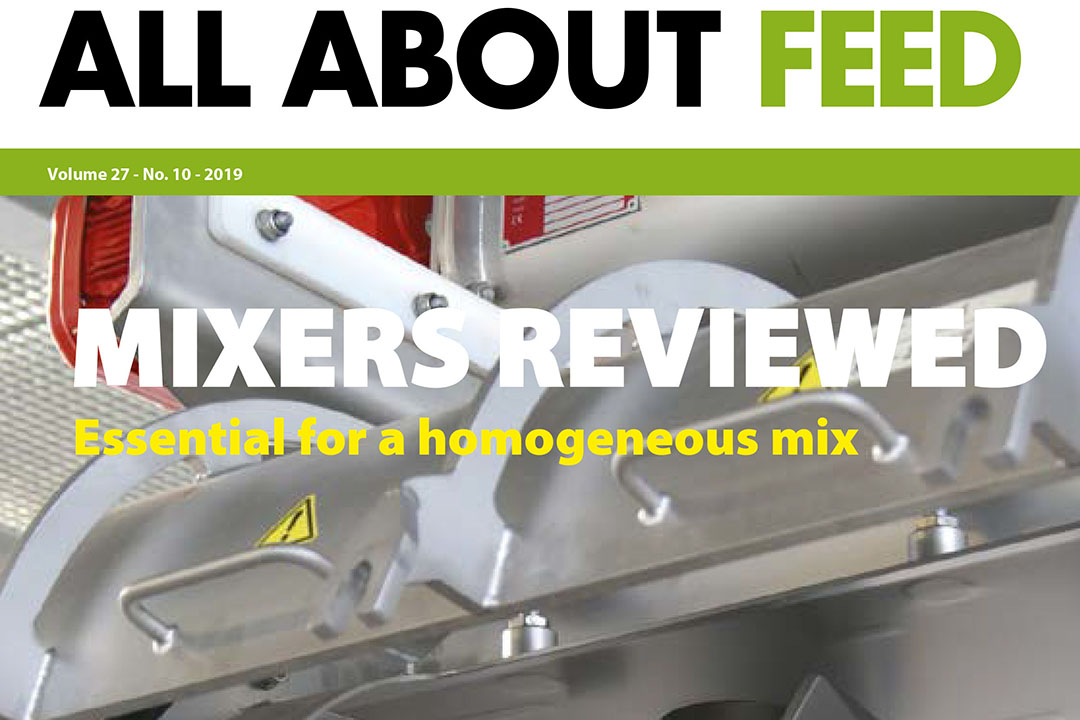Edition 10 of All About Feed now online

In the 10th edition of All About Feed we review different mixer types. The frequency of feed in modern dairy cows is considered, and we talk to Piet van der Aar, Director of Research and Business Development at Schothorst Feed Research, about the future of feed research.
A review of mixers
Animal feed manufacturing entails numerous steps whereby individual ingredients are combined into a homogeneous mix. One of the most important steps is mixing. In this article on page 18 we review different mixer types.
The effects of feeding frequency on dairy cows
The frequency of feed in modern dairy cows affects feed intake, digestion, health, hormones, milk production, resistance to thermal stress and economic returns. In this article on page 12 we take a closer look at each of these aspects in response to feeding frequency.

Choline enhances microalgae in layer diets
It is known that algae benefit broilers. In this article on page 26, Matthew Wedzerai takes a closer look at choline chloride supplementation in hen diets to better understand its complementary effects.

The future of feed research
All About Feed editor, Marieke Ploegmakers, talks to Piet van der Aar, Director of Research and Business Development at Schothorst Feed Research, about the challenges currently facing the feed industry, key research topics in the coming years, and the future of feed research. Read more on page 7.

Biological detoxification of mycotoxins
A study on the biological detoxification of mycotoxins into non-toxic metabolites, which is discussed on page 25, could be a significant strategy to reduce exposure to mycotoxins.
Perhaps generic pic of mycotoxins?
Biotransforming agents could be used to detoxify mycotoxins by bio-fermentation from raw materials of feed.
Nutritional strategies to reduce antibiotics in beef cattle
Greater resistance and robustness of the animals together with the application of good management practices make it possible to avoid preventative antibiotics. We take a closer look at the details on page 30.

Also in this edition
• ForFarmers looks at the raw materials that make up pig feed
• An optimal amino acid supply improves sustainability in broilers
• A new era in amino acid balancing
• ASF affects feed demand in the Philippines
• Columnist Dr Ananwee Petchkongkaew looks at the mycotoxin situation in ASEAN
To access the magazine section, where you will find this as well as other magazines from specialists in the agriculture industry, simply register for free.











